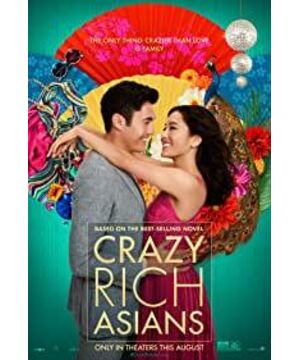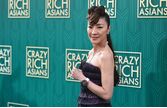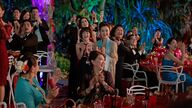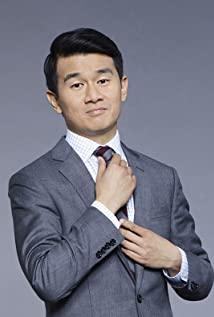Anna May Huang once said: "On the screen, I have died a thousand times ."
I always thought [Crazy Rich Asians] was about the love-hate relationship of Olympic athletes.
Until yesterday, after reading it, I was dumbfounded, and every pore on my body was lying in a trough.
A private mansion that occupies an unobstructed area. When you see a short-lived flower, you have to have a costume party. When you are in a bad mood, you buy a hotel, and when you are cool, you pack an island.
How can this group of Chinese in Singapore's old money circle be so rich?
I subconsciously glanced at the balance of my bank card and burst into tears. I was also yellow-skinned. I was really a drag on my race.
In recent years, a lot of Chinese big money has emerged on the Hollywood screen, and this group of Singapore aristocrats has undoubtedly pushed this image to the extreme.
Some people don't like it and think it's a misunderstanding and a changed prejudice.
In fact, throughout history, Hollywood in every era is full of stereotypes about Chinese people.
However, they are also yellow-skinned. Pushing it forward for a hundred years, they will be in the sky compared to today's on the screen.
As soon as the movie came to North America, there were Chinese people on the screen. At that time, the video was only responsible for recording, not emotional.
In 1894 [Chinese Laundry Scene] was regarded as a pioneering work, and the title was also the content, and the duration was less than a minute.
Although there is no prejudice in the film, that year was the 12th year that the US government passed the Chinese Exclusion Act .
Previously, due to the opening of the country in the late Qing Dynasty due to the Opium War, a large number of Chinese laborers poured into the United States to rush for gold seriously squeezed local resources.
Later, images developed narratives, and discrimination began.
At the beginning, the Chinese were mostly seen in romance films. They fell in love with white people, but they could not end well.
A more representative one is David Griffith's "Tears of Flowers" in 1919. A Chinese man fell in love with a white girl, but the girl's father obstructed it in every possible way, and both of them eventually died.
There are also those who succeeded in cultivation, but in the end, the Chinese turned into white people.
Regardless of whether it was [Can Hua Lei] or the latter, the Chinese protagonists on the screen during this period were all played by white people, who painted their faces yellow, just like they imitated black people in stand-up comedies in the early years.
Until [Red Lantern] was released, the first Chinese actress Anna May Wong finally appeared in Hollywood .
Anna May Wong grew up in Los Angeles, her father was a first-generation Chinese laborer, and she could be called the first Chinese goddess in the hearts of Americans.
Even so, the status is still very humble, the acting career is almost all the characters who love and cannot die tragically, and in the end, it is always two white people who are together.
She jumped into the sea in [Sea Die], and was shot and killed by her lover in [Chinatown Prosperity Dream].
What's even more excessive is the 1937 "Dadi" , a film that focuses on the love of two Chinese people. In the end, it was actually two white people who painted yellow kissing each other, and she wanted to appear but was rejected.
Anna May Wong is almost the epitome of the segregation of yellow and white racial love in the films of that period, and the prejudice is not only in the film, but also off the screen. I am also alone because of California law prohibiting the marriage of white and Chinese Americans.
It didn't take long for this industry default to be written into the law as well, the later infamous Hayes Code.
The asymmetry of love in the movie satisfies Hollywood's fantasy of the exotic in the East, but it also conveys a kind of top-down superiority of white people over Chinese, which is discrimination and prejudice, straightforward and naked.
Still, not the worst, compared to demonization, these are all pediatrics.
The Yellow Peril Theory that emerged at the end of the 19th century gave birth to the British Sax Romer to create Fu Manchu .
This doctor, who is dressed in the official uniform of the Qing Dynasty, has a sinister face, slender eyes, and a mustache that always exceeds his chin, almost perfectly fits all the inferior imaginations of the Western world about the appearance of yellow people.
Within a few years, this character with strong racial discrimination crossed the ocean to Hollywood.
In 1929, "The Mysterious Fu Manzhou" was released. When the Chinese were still struggling for an interracial love on the screen, Hollywood's demonization of it had already begun.
The Fu Manchu in the film is mysterious and evil, knowledgeable but subversive and destructive, with minions all over the world, and even more exaggerated is immortality, and every time he is wiped out at the end of the film, he is resurrected with blood at the beginning of the next film.
The powerful and "oriental" villain was killed by white people again and again, which undoubtedly satisfied the lust of the Americans. Although the Chinese did not support it, it did not affect the white people's rush.
Its influence is also very far-reaching. Until the end of the 1960s, there were more than ten Fu Manchu films in Hollywood, not only Huang Anna May, but also inspired the later Marvel.
In addition to the Yellow Peril, the Cold War after the end of World War II made the image of the Chinese in the film even worse.
The prevailing McCarthyism in the 1950s inspired the panic of the proletariat in the United States, and at the same time gave birth to a new Chinese villain on the screen.
In 1951's [Peking Express] , the Chinese side became the biggest villain.
1952's [Never Retreat! ] tells the story of resisting US aggression and aiding Korea, but from the standpoint of the United States, the image of the Chinese in the film can be imagined.
In 1954 [Blood Prisoner of War Camp] , spies from China conspired to detonate a nuclear bomb in North Korea to blame the United States. Although the conspiracy was finally exposed, it really deepened the fear of red disasters in American society.
The trend of red calamity that politics needs to set off is not only a slander against the Chinese people, but also pushes the image of the Chinese who were originally stretched farther and farther on the screen.
Yellow peril and red peril are two-pronged, and the Chinese have truly become the beasts of the flood in Hollywood movies.
This embarrassment continued until Sino-US relations eased in the 1970s, and since then, the Chinese on the screen have finally had more positive possibilities.
Hollywood screenwriter godfather Robert McKee once said:
In an ideal world, art and politics would have nothing to do with each other. But in reality, they can't be at peace with each other.
The same is true of movies. In the early 1970s, with the improvement of Sino-US relations, a tough guy named Bruce Lee appeared on the Hollywood screen.
In Bruce Lee's films, the image of the Chinese is different from the past, and always appears as a decent image of punishing evil and promoting good, which is undoubtedly a qualitative leap.
More importantly, American audiences have also begun to accept this kind of setting. The box office explosions of [Tangshan Big Brother] and [Jingwumen] have established Bruce Lee's status as a superstar, and also let Kung Fu go deep into the hearts of Americans.
It is a pity that Bruce Lee's sudden death in 1973 brought a brief end to the kung fu frenzy at its peak.
Seven years later, Jackie Chan broke into Hollywood with a movie [Killer Trench], which was regarded as taking over the torch of Bruce Lee, but the influence of his predecessors was too great, and the response was mediocre.
It was not until the success of [Red Zone] in 1994 that Hollywood slowly recognized Jackie Chan.
In addition, Jet Li, who took over from Jackie Chan in the late 1990s, and the efforts of three generations, finally locked the mainstream image of the Chinese in the movie and the kung fu master, and is no longer a beast of a flood.
At the same time, after entering the new millennium, China has continued to rise. With the holding of the Olympic Games, the world has seen a Chinese ethnic group with extraordinary comprehensive strength.
This kind of power has also been intuitively reflected in Hollywood movies. The personal image of the Chinese has become a group portrait. They are omnipotent and even save the world.
In [2012] , the world's last refuge is in China, the metaphor is obvious.
The same bridge also has [Gravity] , China's International Space Station became Sandra Bullock's last straw.
In addition, thanks to the improvement of economic strength, more Chinese people have poured into the United States, and the image of Chinese local tyrants on the screen has become more and more clear in recent years.
In [Pacific Rim 2] , Jing Tian owns the largest private mecha company, allowing American audiences to see the power of Chinese capital.
In [Wall Street: Money Never Sleeps] , Pan Shiyi's wife Zhang Xin made a cameo appearance as a Chinese businesswoman in it, which is definitely a true character.
And in [Crazy Rich Asians], it became a carnival of a group of rich Chinese. In the movie, they were rude and inhumane. As a spectator, I was amazed.
In fact, whether it is a kung fu master or a local tyrant, although it seems to be getting better and better on the surface, in fact, it is no different from the sad girl who could not love at first, or the yellow and red double disasters earlier.
They are all flat, full of Western stereotypes and stereotypes of Chinese people, but the times have changed and prejudice has also advanced with them.
Anna May Wong once said, "On the screen, I have died a thousand times ."
All of them are helpless and unwilling.
It is a pity that the Chinese on the Hollywood screen in every era are not like this. They have been running for a hundred years, but they have not yet escaped the narrow vision of the Americans.
-
Author / Yaoyao Wine
The article was first published on the WeChat public account "Bao Ci Er"
View more about Crazy Rich Asians reviews











